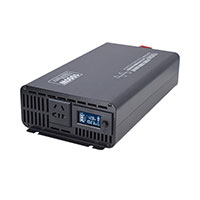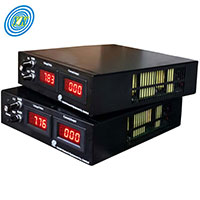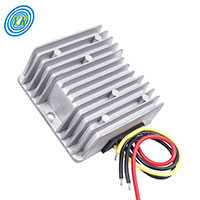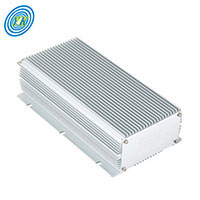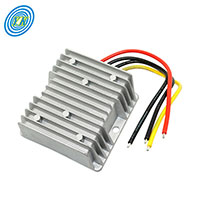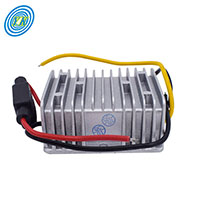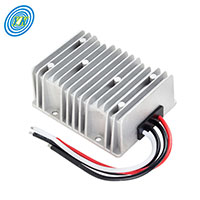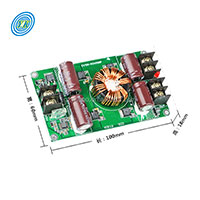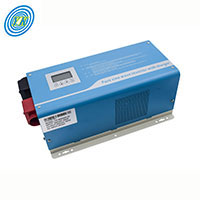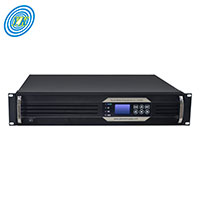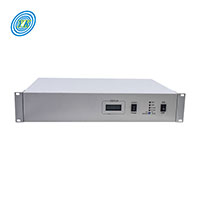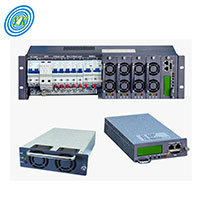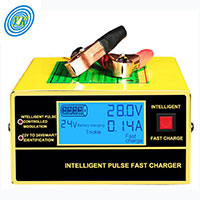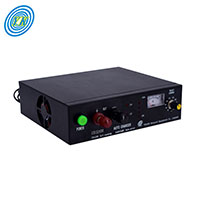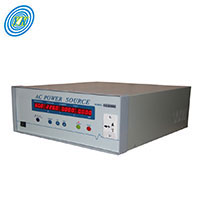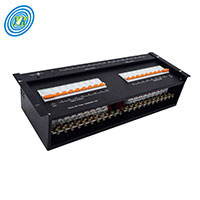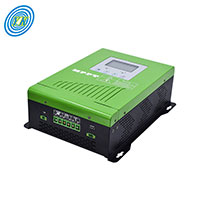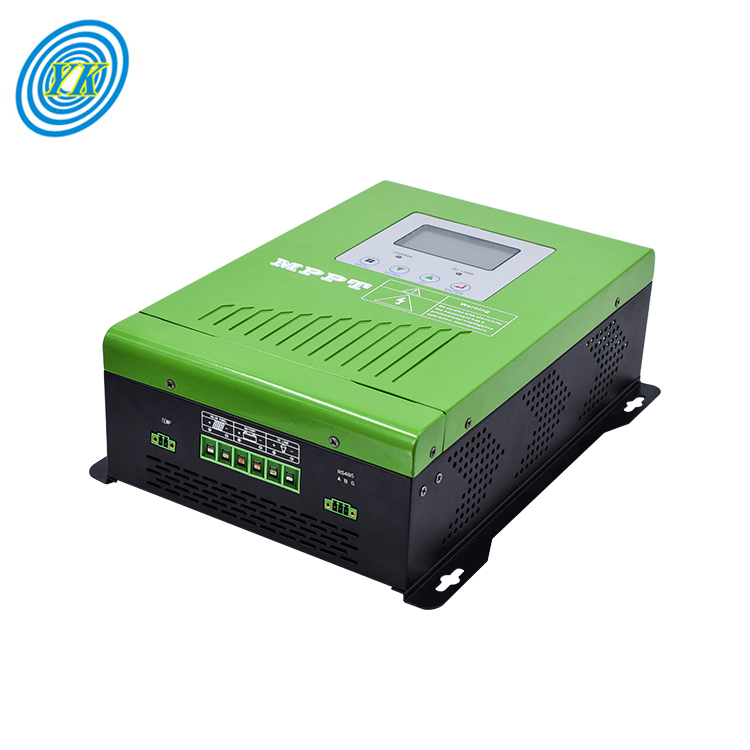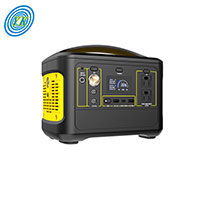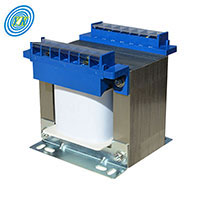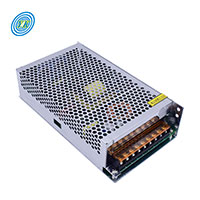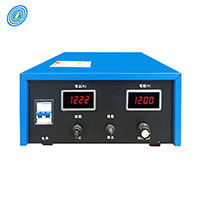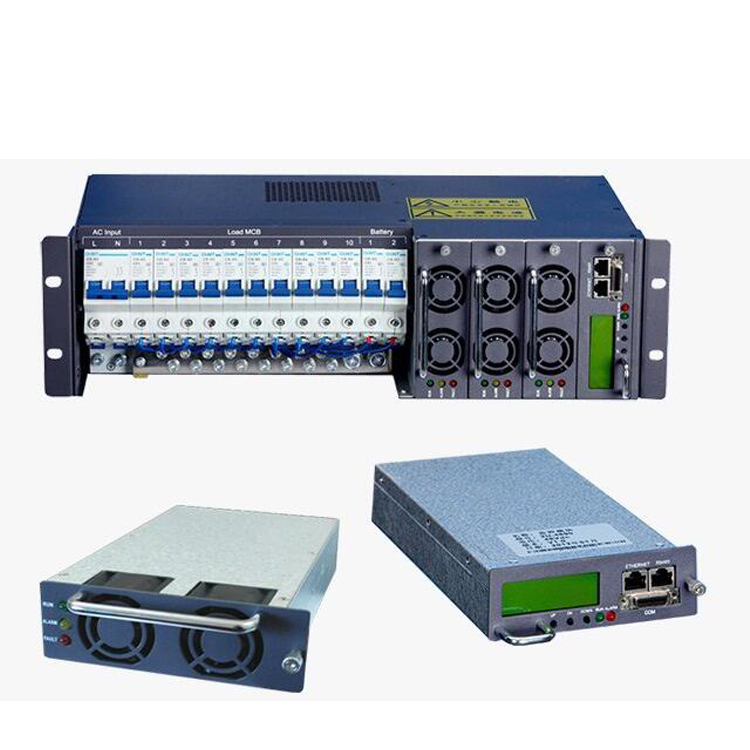
Click: 803 Date: 08/25/2023 09::39::45 AM
Rectifier System OverviewA rectifier is an electrical device used to convert alternating current (AC) into direct current (DC) by allowing current to flow in one direction only. It consists of diodes that act like one-way valves to rectify the current. Rectifiers are essential components in DC power supplies and high-voltage direct current transmission systems. The efficiency and quality of a rectifier are determined by factors such as voltage applied, current needed, power quality, and control arrangement.Yucoo Rectifier System ProductsYucoo is a reputable power supply manufacturer that offers a range of rectifier system products. These products are widely used in various industries including metal finishing, mining, steel, chemical, defense, and hydrogen production. Yucoo rectifier systems are known for their high efficiency, with an efficiency rating of more than 90%. Some features and specifications of Yucoo rectifier systems include:SNMP or TCP/IP port for monitoring and control: Currently, Yucoo rectifier systems do not support SNMP or TCP/IP ports. However, they offer RS485 communication ports with RS485 protocol.Modular design: Yucoo rectifier systems can be configured with different rectifier modules based on the required output current. For example, a 48VDC30A rectifier system can use two 15A rectifier modules, and even if one module fails, the system can still operate at 15A output.Whole Rectifier System components: A complete Yucoo rectifier system consists of a rack mount, monitor module (with or without LCD display), rectifier module(s), and DC distribution module.Yucoo rectifier systems are known for their reliability, high-quality construction, and excellent customer support. We have been serving the industry for over 20 years, providing customized power supply solutions to meet specific requirements.
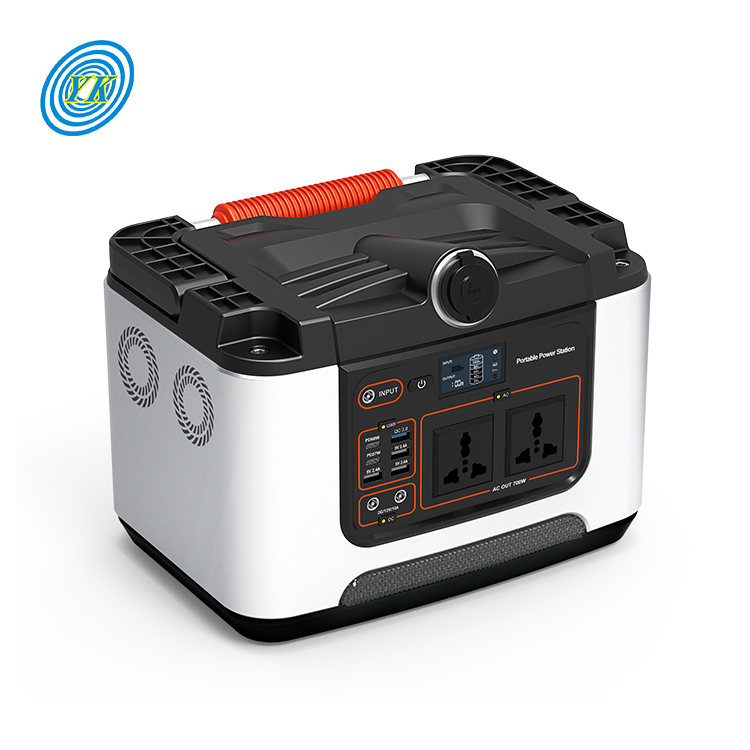
Importance of considering resistance to environmental factors in portable power station
Click: 617 Date: 08/25/2023 09::34::01 AM
Importance of considering resistance to environmental factors in portable power stationIt is important to consider the resistance to environmental factors in a portable power station for several reasons:Protection from Damage: Portable power stations are often used in outdoor environments where they can be exposed to various weather conditions such as rain, humidity, extreme temperatures, and dust. Considering the resistance to these environmental factors ensures that the power station is protected from potential damage, preventing malfunctions or even permanent failure.Durability and Longevity: A power station that is resistant to environmental factors is likely to have better durability and longevity. It can withstand the rigors of outdoor use and continue to function reliably over an extended period. This is especially important for portable power stations that are intended for camping, hiking, or other outdoor activities.Safety: Environmental factors can pose safety risks to portable power stations. For example, exposure to moisture or water can lead to electrical hazards. By choosing a power station with resistance to environmental factors, you can minimize the risk of electrical accidents and ensure the safety of yourself and others.Reliable Power Supply: A portable power station that is resistant to environmental factors is more likely to provide a reliable power supply in various conditions. It can continue to function optimally even in challenging environments, ensuring that your devices and appliances stay powered when you need them the most.To ensure the resistance to environmental factors in a portable power station, look for features such as water resistance, dust resistance, and temperature resistance in the product specifications. Additionally, following the manufacturer's guidelines for usage, storage, and maintenance can help prolong the lifespan and maintain the performance of the power station in different environmental conditions.
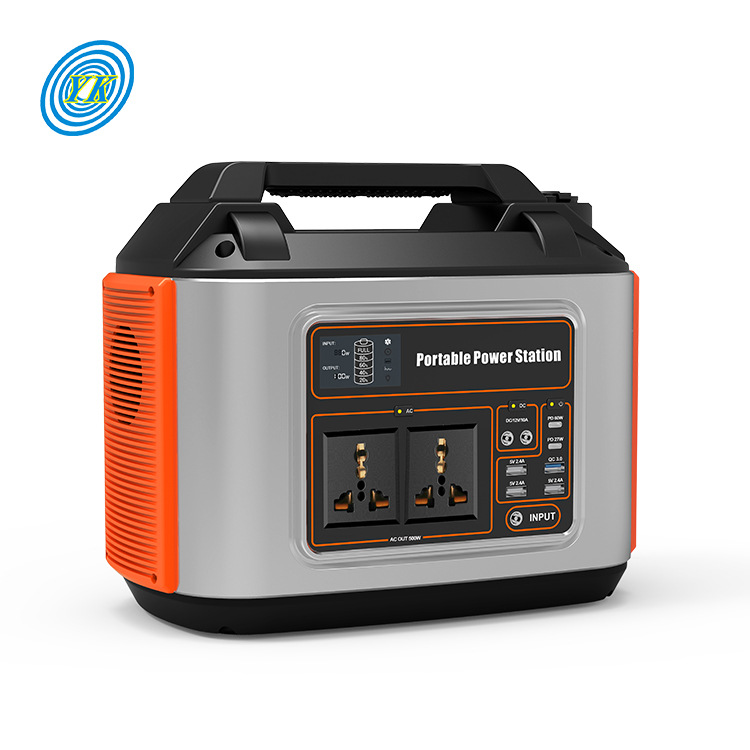
Factors affecting charging efficiency of portable power station
Click: 595 Date: 08/25/2023 09::31::04 AM
Factors that can affect the charging efficiency of a portable power station include:Charging Method: The chosen charging method can impact the efficiency of charging a portable power station. Common charging methods include AC outlet charging and solar charging. AC outlet charging is the most common and widely available method, while solar charging harnesses the power of the sun. Using a high-quality solar panel with sufficient wattage and ensuring compatibility with the power station can optimize solar charging efficiency.Charging Time: The duration of the charging process can affect efficiency. Depending on the capacity of the power station and the charging method used, it may take several hours to fully charge. Allowing sufficient charging time ensures that the power station reaches its maximum capacity, maximizing power availability when needed.Charge Rate: The charge rate of a portable power station determines how fast it can be charged. Higher charge rates result in faster charging. It is important to know the maximum charge rate of the power station and use a matching high-power charger to increase the charging speed whenever possible.Battery Capacity: The capacity of the power station's battery affects the charging efficiency. Batteries with larger capacities may take longer to charge but can store more energy. Understanding the battery capacity and managing the charging process accordingly can optimize efficiency.By considering these factors and following the manufacturer's instructions, users can optimize the charging efficiency of their portable power stations, ensuring reliable and convenient power supply in various scenarios.
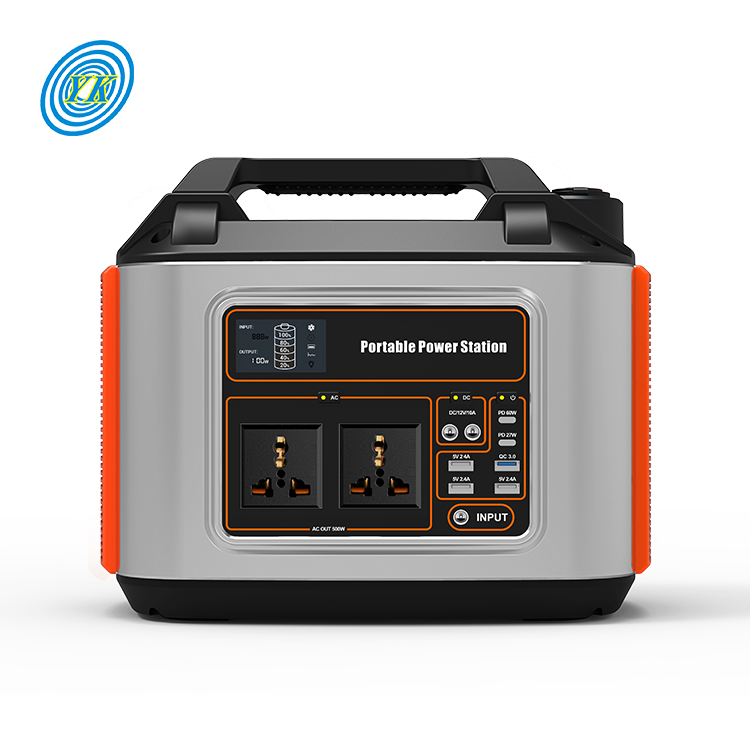
Effects of age and deterioration on portable power station performance
Click: 624 Date: 08/25/2023 09::26::16 AM
Age and deterioration can have several effects on the performance of a portable power station:Battery Capacity: Over time, the battery capacity of a portable power station can decrease. This means that it may not be able to hold as much charge as it did when it was new. As a result, the runtime of the power station may be shorter, and it may not be able to power devices for as long as it used to.Charging Efficiency: Deterioration of the internal components, such as the charging circuitry, can affect the charging efficiency of the power station. It may take longer to charge the power station fully, or it may not charge to its maximum capacity.Performance Under Load: As a power station ages, its ability to deliver power under load may be compromised. It may struggle to provide the required voltage and current to connected devices, leading to decreased performance or even device malfunction.Physical Wear and Tear: Age and deterioration can result in physical wear and tear of the power station's components. This includes connectors, cables, and switches. Loose connections, frayed cables, or damaged components can affect the overall performance and reliability of the power station.Resistance to Environmental Factors: Over time, the resistance of the power station to environmental factors such as temperature, moisture, and impact may decrease. This can make the power station more susceptible to damage from these factors, potentially affecting its performance and lifespan.To mitigate the effects of age and deterioration on the performance of a portable power station, it is important to follow the manufacturer's guidelines for maintenance, such as regular cleaning and proper storage. Regular inspections can help identify any signs of wear or damage that need to be addressed promptly. Additionally, using the power station within its recommended load capacity and avoiding extreme temperatures can help prolong its lifespan and maintain optimal performance.
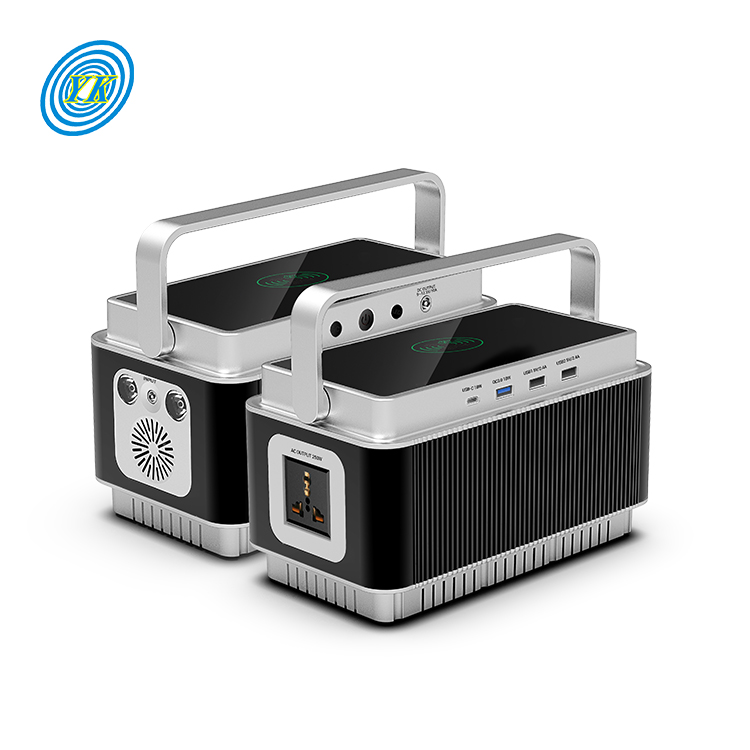
What to look for during periodic inspection of portable power station
Click: 751 Date: 08/25/2023 09::22::31 AM
During a periodic inspection of a portable power station, there are several important things to look for:Safety: Ensure that the power station is safe to use and test and that you have sufficient information to carry out the inspection safely. Check for any visible signs of damage or wear that could pose a safety risk.Age and Deterioration: Examine the power station for any signs of aging or deterioration. Look for corrosion, rust, or other forms of damage that could affect its performance or lifespan.Equipment Corrosion: Check for any corrosion on the power station's equipment, connectors, and cables. Corrosion can weaken connections and affect the overall performance of the power station.Overload: Ensure that the power station is not being operated beyond its rated capacity. Check the load capacity and verify that the connected devices are within the recommended limits to prevent overloading and potential damage to the power station.Control Wiring: If applicable, inspect the control wiring of the power station. Check for any signs of damage or wear on the wire insulation. Inspect the control cabinet and associated conduit to ensure that weather seals are intact. Verify the control power supply voltage and compare it to the voltage stated on the wiring diagram.General Condition: Evaluate the overall condition of the power station. Look for any loose connections, frayed cables, or damaged components. Check for any unusual noises or smells during operation. These can be indicators of potential issues that need to be addressed.By conducting a thorough inspection and addressing any issues promptly, you can ensure the proper functioning and longevity of your portable power station.
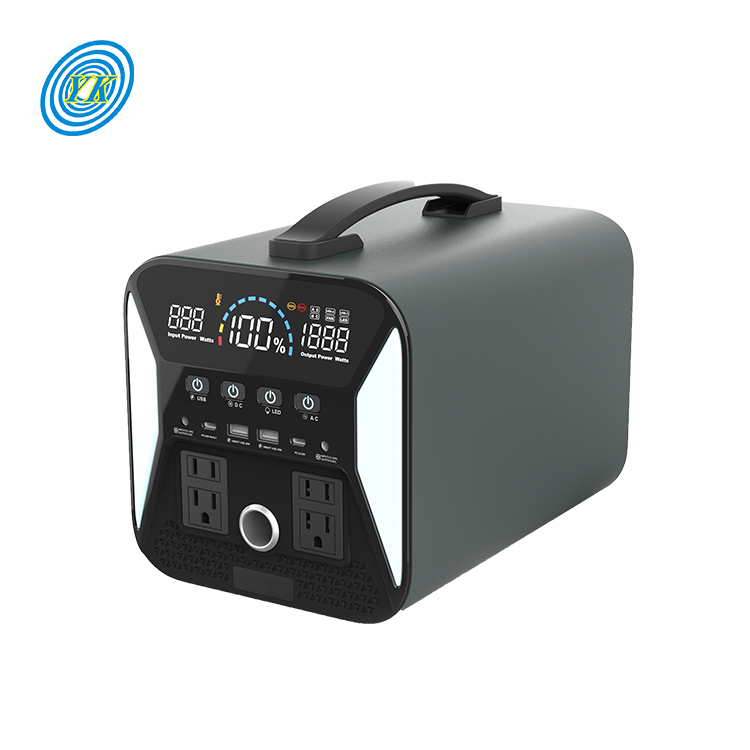
How safety margin enhances safety of portable power station and connected devices
Click: 797 Date: 08/24/2023 5::16::25 PM
How safety margin enhances safety of portable power station and connected devicesAdding a safety margin to the total wattage calculation enhances the safety of a portable power station and the connected devices in several ways:Prevents Overloading: Overloading a power station by connecting devices that collectively exceed its maximum capacity can lead to overheating. Overheating, in turn, can cause damage to both the power station and the connected devices. A safety margin ensures that the power station operates below its maximum capacity, reducing the risk of overloading and subsequent overheating.Accommodates Fluctuating Power Needs: Devices often require more power at startup (known as surge or peak power) than during regular operation. A safety margin provides the extra capacity needed to accommodate these temporary power spikes, ensuring the power station can handle them without shutting down or damaging the connected devices.Enhances Durability: Operating a power station close to its maximum capacity for extended periods can cause wear and tear, which reduces its lifespan. A safety margin helps ensure the power station operates below its maximum capacity, thus prolonging its life.Allows for Unexpected Power Needs: Unexpected situations may arise where you need more power than your initial calculation. A safety margin provides the extra capacity needed for these unforeseen power needs.Facilitates Safe Operation: Many portable power stations have built-in safety features such as short circuit protection, overload protection, overvoltage protection, and surge protection. These features help ensure your equipment is safe and secure. A safety margin contributes to the effectiveness of these features by reducing the risk of operating conditions that could trigger them.Adding a safety margin to your total wattage calculation is therefore a prudent practice that enhances the safety and longevity of your portable power station and the devices connected to it. It's important to note, however, that the safety margin is not a substitute for proper use and maintenance of your power station. Always follow the manufacturer's guidelines for use, storage, and maintenance to ensure the safety and performance of your power station.
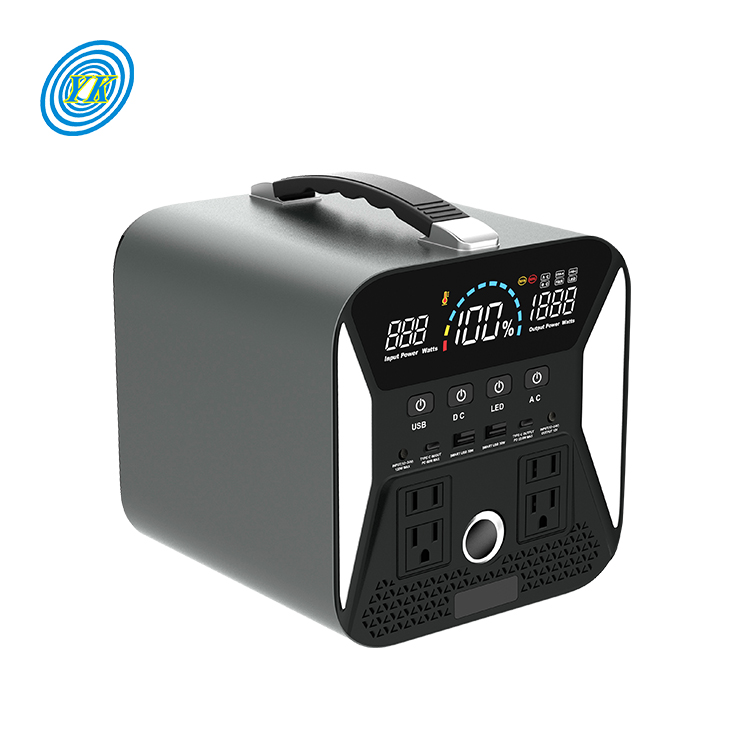
Importance of adding a safety margin to total wattage calculation for portable power stations
Click: 712 Date: 08/24/2023 4::43::31 PM
Adding a safety margin to the total wattage calculation is crucial for several reasons:Fluctuating Power Needs: Devices often have fluctuating power needs. For example, some appliances require more power at startup (known as surge or peak power) than during regular operation. A safety margin ensures that your power station can handle these temporary power spikes without shutting down or damaging the connected devices.Device Addition: You might want to connect additional devices to the power station in the future, which might not have been included in your initial calculation. A safety margin provides the extra capacity needed for these potential additions.Unforeseen Power Needs: Unexpected situations may arise where you need more power than your initial calculation. For example, during a power outage, you might need to use more devices simultaneously than you usually would.Prolonged Lifespan: Operating a power station close to its maximum capacity for extended periods can cause wear and tear, reducing its lifespan. A safety margin helps ensure the power station operates below its maximum capacity, thus prolonging its life.Safety: Overloading a power station can lead to overheating and potential damage. A safety margin provides a buffer against overloading, enhancing the safety of the power station and the connected devices.A common practice is to add a safety margin of around 20% on top of your calculated total wattage. This percentage is a guideline and not a strict rule, so it can be adjusted based on your specific needs and circumstances.
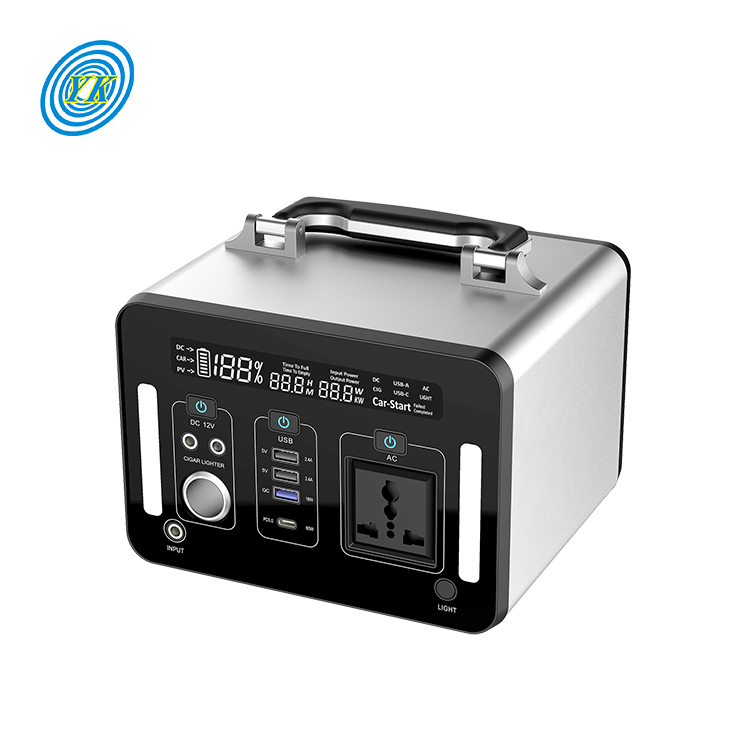
How to calculate total wattage of devices for a portable power station
Click: 691 Date: 08/24/2023 4::19::57 PM
How to calculate total wattage of devices for a portable power stationCalculating the total wattage of the devices you want to connect to a portable power station involves a few steps:Identify the Wattage of Each Device: For each device you plan to connect to your portable power station, identify its wattage. This is usually listed on the device itself or in its manual. If the wattage isn't provided but the device's amps (A) and volts (V) are, you can calculate the wattage (W) using the formula W = A x V.Calculate Total Wattage: Add up the wattage of all devices you plan to power simultaneously. This gives you the total wattage your portable power station needs to provide.Here's a simple example:Laptop: 60WSmartphone: 5WPortable fan: 30WLED light: 10WTotal wattage = 60W (laptop) + 5W (smartphone) + 30W (fan) + 10W (LED light) = 105WIn this case, you would need a portable power station that can provide at least 105W.Consider Surge Power: Some devices require more power when they start up (known as surge power or peak power) than they do to continue running. If any of your devices have a higher surge power, you should take this into account when calculating the total wattage.Consider Safety Margin: It's a good practice to add a safety margin of around 20% on top of your calculated total wattage. This accounts for any unforeseen power needs and helps prolong the lifespan of your power station.Remember, this is a simplified guide and actual power requirements may vary based on the specific devices and their settings. Always refer to your device's manual or consult with the manufacturer if you're unsure.
